While driving Sandra Meek from the Tampa Airport to the University of South Florida for a reading, I spent much of the trip asking her questions about her travels and trying not to be too enthusiastic about her writing. Be cool, don’t overwhelm her. About halfway into the drive I cracked. I probably said something along the lines of “Sorry for fangirling, but I am in love with your poetry.” Her sincere humility and appreciation of my praises speaks to her character: she is not writing for applause or acclaim, but rather to offer readers a new lens on the world.
Sandra Meek is the author of five books of poetry—Road Scatter, Biogeography, winner of the Dorset Prize, Burn, and Nomadic Foundations, as well as a chapbook, The Circumference of Arrival. Her newest collection An Ecology of Elsewhere was released today, May 3, 2016. She is Co-founding Editor of Ninebark Press, Director of the Georgia Poetry Circuit, Poetry Editor of the Phi Kappa Phi Forum, and Dana Professor of English, Rhetoric, and Writing at Berry College.
Meek’s poetry is grounded in the nature, and she describes setting and images with the eye of an ecologist and the precision of a poet. Her careful inquiry and exploration of the relationships between earth and bodies is stunning. I admire the way her poems beg questions of me as a reader and leave me yearning for more, much like her responses to these interview questions do.
—
AH: In creative writing we often talk about the gray areas among genre—fiction, nonfiction, and poetry. Where do you see your work falling? Has it always been this way for you?
SM: For me, it’s always been poetry. I love how poetry itself is a “gray area,” how, for instance, while at a bookstore prose is stacked by “fiction” or “nonfiction,” and within nonfiction, categorized still further, e.g., “memoir,” “nature writing,” etc., poetry is simply “poetry.” I love how open the genre is, how these boundaries don’t exist, don’t matter, unless the poet herself decides to embrace a particular mode—the documentary, the confessional—over others.
That said, I see my own recent work as increasingly fusing documentary elements, particularly those associated with place–natural history/environmental concerns, political history and currency—with personal experience. My new book, An Ecology of Elsewhere, though it “begins” in personal experience—my extended returns to southern Africa twenty years after my time as a Peace Corps volunteer in Botswana, as well as the travels my sister and I took with my father the last years before he died—draws much more on the documentary than does the book before it, Road Scatter, which was largely about my mother’s illness (lung cancer) and death.
AH: Several of your poems press into the intimacies of illness and grief without the melodrama associated with these subjects. How did you craft the structure of poems such as “Cumulative Sentence” (which is a cumulative sentence divided by sections that begin with the phrase “mother of”) and “In Case, Since You Left, You’ve Been Wondering” (which is a series of responses to unasked questions) instead of writing a traditional illness narrative? How does creating unique structures shape the way you reflect on illness and grief?
SM: When my mother was dying, those last months, she would do things like call my sister and shout “mother” into the phone when one of my sister’s kids answered. The word “mother” often came up in my mother’s increasing confusion, as well as in moments of clarity, when she’d remember things about her own mother and her death.
I actually looked back at my notebooks from that time in order to consider your question. When my mother was dying, those last months she couldn’t stand to be alone, so I’d sit there in her room—all day, often, that last summer. To keep myself sane, one thing I did was write down whatever she would say, things, I see looking back, like “Can Mother go to the bathroom?” Or, when the nurse gave her pills, her asking me, “Mother, are these the right ones?”
After writing these things down, I see I began freewriting about “mother,” how that word seemed to go to the brain’s core, how it seemed all words came from that fundamental one–and of course this felt true for me, too: this was my mother dying, and on one level the very plain fact of that remained incomprehensible. From there in my drafting came the repetition of “mother” and the evolution of the form, which felt true to me to that overwhelming experience of watching the advancing stages of someone you love dying from cancer—especially when that person is the one who brought you into this world. We had nine very bad months. It did feel like a sentence, in the other sense of the word, not just for my mother, but for my sister and me; it felt endlessly cumulative—until it did end.
So, to your primary question—the structure emerged from the nature of the grief. This is true, too, I think, for other poems in the book—for instance “Last Rites,” the only pantoum in the book, the only one I’ve ever written, found that form because in that shock and numb of grief, when I was writing about my mother, I kept repeating phrases; when I saw that happening, I decided to formalize it further into the pantoum, and that helped me to get through what was for me difficult material and hopefully to find a form which isn’t “other” to content, but a part of it.
AH: I’ve often been told to end creative writing in image(s). In your work I see this “rule” bent; some poems end in images with vivid colors, others with sharp sounds or resounding ideas. How do you approach endings? How do you know when you’ve reached the end of a poem?
SM: This is such a hard question! I don’t have any rules or guidelines, beyond just wanting something that resonates without being a heavy-handed “wrap up.”
I think there are actually two questions here, one about when you’ve reached the end of the poem in terms of revising, and another when you’ve settled on the final endpoint of the poem. The ending often changes very late in the process for me. For instance, with “River Horse (Hippopotamus amphibious), Okavango Delta,” the second poem in An Ecology of Elsewhere, when I received the notes back from my (brilliant) editor, he’d identified its original ending as problematic, which at that point made an allusive connection between Shadrach, the name of the man in the poem, and the biblical Shadrach. This ending itself I’d added late in the process of writing the poem because I had a conversation with a scholar friend who’d told me the biblical story of Shadrach (who was thrown into a fire, but not consumed), and there were such strong overtones with the poem that I couldn’t resist adding it. But instead of it being resonant for what was really going on in (and not just in a narrative sense) the poem, it was a distraction. My editor said it needed to be cut, and he was absolutely right. It then took more work, of course, to find the new ending, which, it turned out, was already embedded in the poem. Is it the final ending? Who knows! But I’m much happier with it now, and I’m good with letting it go, with its appearance in the book. It feels final, for now.
AH: So much of your poetry is grounded in setting drawn from real-life experiences. How do you capture a setting when you’re there in the moment, and how do you transport yourself back to those places when you’re writing at the desk?
SM: Of course, in the moment I try to see as much and as closely as I can. I also take a lot of photos, which for me is an aid, as an alternative view, to observation in the moment, not a replacement for it. Besides notes I also sometimes take, I use these photos as memory triggers and as documentary “evidence” to draw from. I’ll often place one of these photos on my desk, of a place or “object” that feels key to a poem I’m drafting, then when I finish I’ll swap it out for the next poem. I take endless pictures when I travel or when I’m looking at something I’m fascinated by. Recently, I’ve been taking photographs of the progression of a cedar apple rust gall on a juniper tree—really!
AH: What is one of your favorite writing exercises you’ve given yourself or your students?
SM: One of my favorite exercises I give my students is one that came from my own work–this sounds weird, but once I was writing a poem that I felt needed more blue, and I decided to get some blue paint samples from the home improvement store. Then I realized how fascinating the names of paint colors are. On multiple visits, I collected a lot of these, and now what I do, as an exercise to pay attention to how language occurs in the world outside of formal texts, is have the students sit in a circle on the floor; I throw the pile of samples in the middle of the circle, then give them ten minutes or so simply to grab cards and write down as many names as they can that attract them, for any reason. They have a lot of fun with this, and they’ll shout out to the group particularly funny or strange ones—e.g., “Postmodern White,” which isn’t white at all, but gray. Then, the assignment is to write a poem with a good number of these—I might tell them to use at least ten or fifteen. They always come up with great stuff from this!



